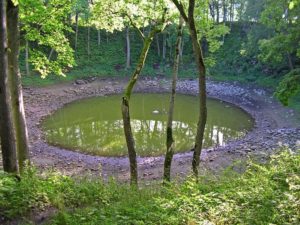Impact craters 🢔 Geological wonders 🢔 Categories of wonders
Wonder
Tabun Khara Obo
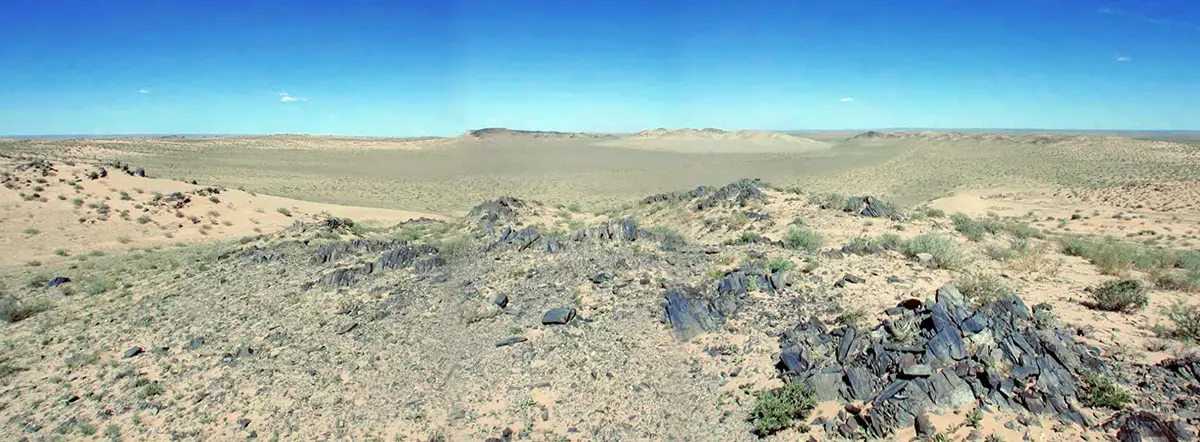
 In short
In short
The best known impact crater in Mongolia is Tabun Khara Obo – well exposed, saucer-formed depression.
 45.3%
45.3%
GPS coordinates
Alternate names
Diameter
Depth
Age
Map of the site
If you see this after your page is loaded completely, leafletJS files are missing.
 In detail
In detail
Description
Diameter of this crater (between rims) is between 1,230 and 1,360 m. The circular rim is elevated above the surroundings, but it is not very distinct, with several discontinuities. The bottom of the crater is located some 20 – 30 meters deeper than the rims.
The age of impact is not known. Meteorite here met approximately 600 million years old Proterozoic rocks – schist, gneiss, and amphibolite.
Earlier this crater was much deeper – now it is filled with up to 171 m thick layer of saline lake deposits. On top of these deposits are some meters of wind-blown sand. This means that for the most part of its history this crater was filled with a lake – similar to Lonar crater in India and some other craters around the world.
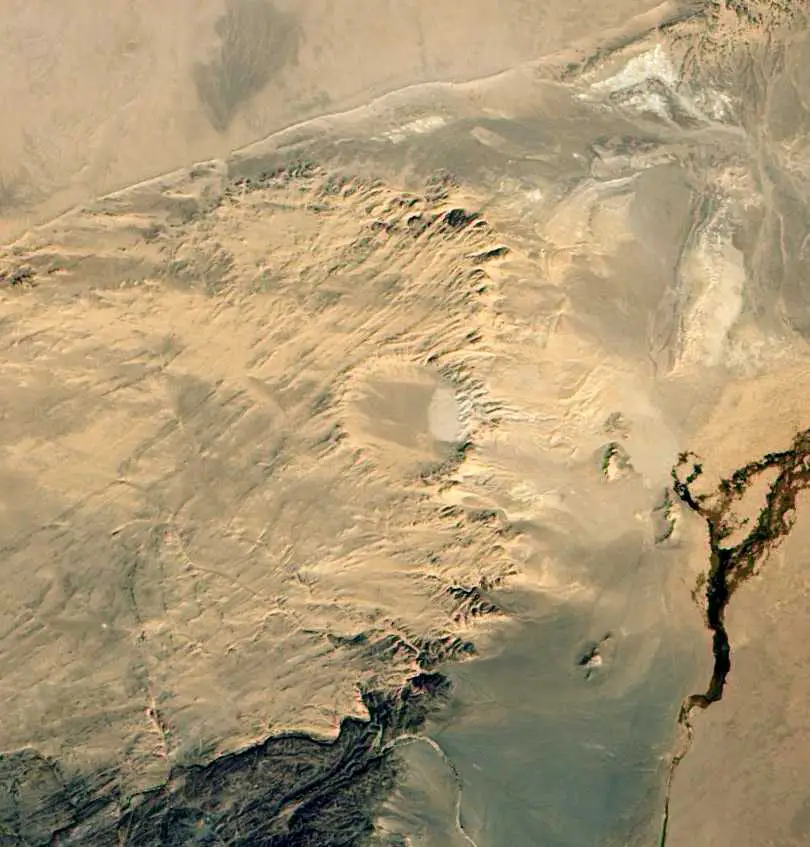
Discovery and research
It is not known with certainty when this crater was discovered but first specialists who saw it were I.T.Zotkin and V.I.Tsvetkov, who noticed this structure from air in 1960s, scientific description was done by O.Suetenko and L.Shkerin in 1970. They considered that this most likely is an impact structure.
This was proved by drilling in the centre of crater in 2008, when specialists discovered rocks metamorphized by the explosion of meteorite and having the characteristic planar deformations.
References
- О.Д. Суетенко, Л.М. Шкерин. Предполагаемый метеоритный кратер в юго-восточной Монголии. Астрономический вестник, 1970.
- Tsolmon Amgaa. Impact Origin of Tabun Khara Obo Crater, Mongolia, Confirmed by Drill Core Studies. 2009 Portland GSA Annual Meeting (18-21 October 2009).
Tabun Khara Obo is included in the following article:
 Linked articles
Linked articles
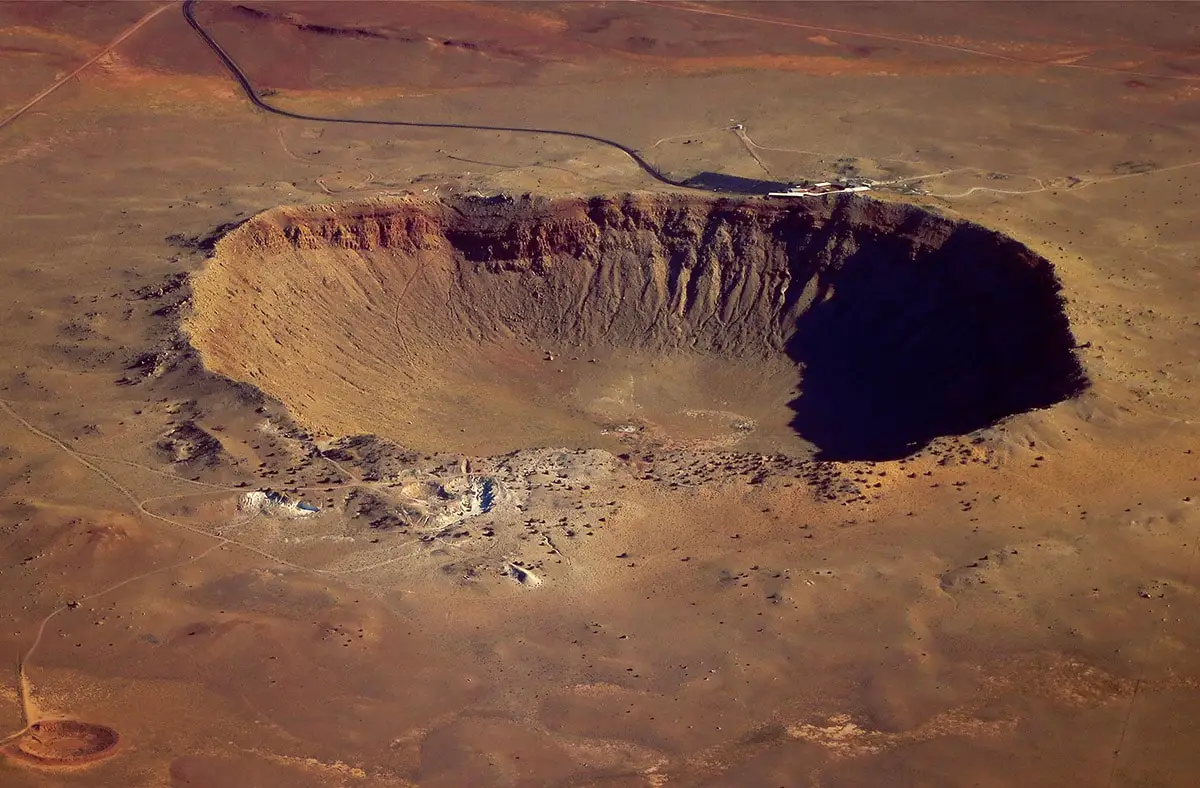
Impact craters
There are many pieces of solid matter flying around in space. And VERY frequently they fall on the surface of the Earth. There are estimates that every year on Earth fall 18,000 – 84,000 meteorites larger than 10 grams: e.g. one meteorite every 6 – 30 minutes.
This category includes outstanding impact craters – detectable scars on the surface of Earth left by a body coming from outer space. The category includes also meteorites – natural objects from outer space.
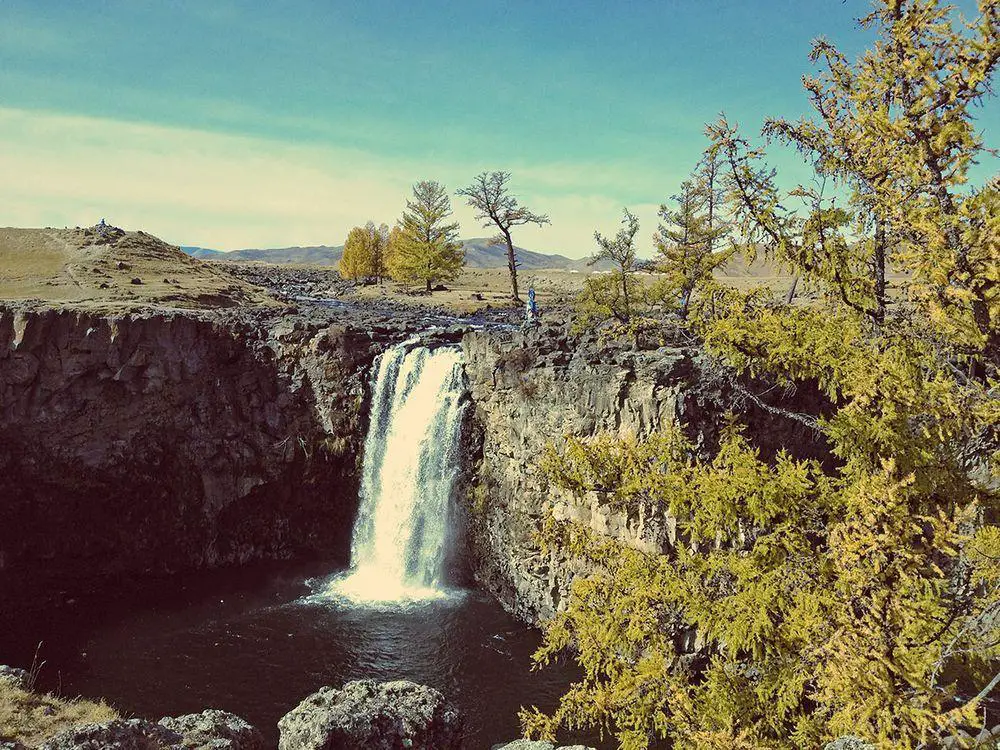
Wonders of Mongolia
This enormous country is sparsely populated – but quite rich with natural and man-made heritage. Highlights of Mongolia are fossil finds – unique places that are packed with fossilized bones of extinct reptiles and amphibians, as well as rich and often unique monuments of prehistoric rock art.
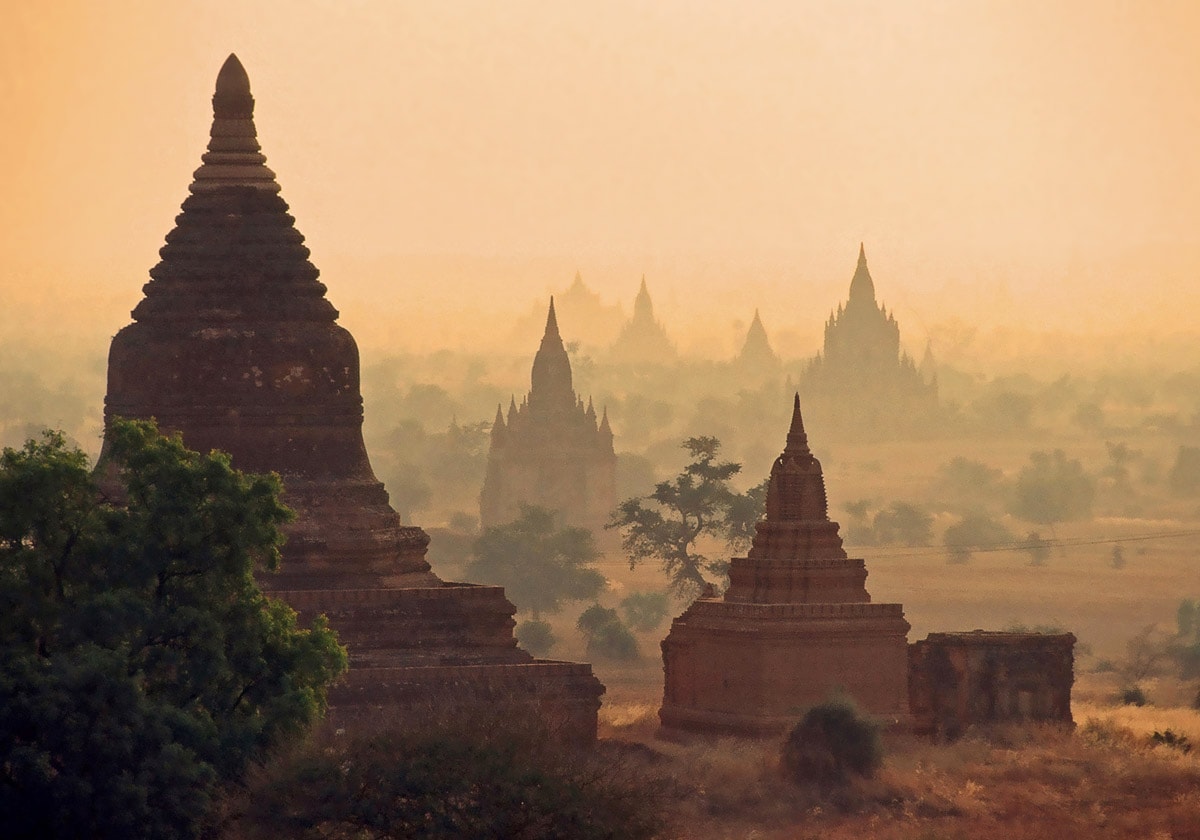
Wonders of Asia
Any other continent (and part of the world) seems small if compared to Asia. This refers also to natural and man-made heritage: in Asia are not just thousands of great landmarks, there are found landmarks created by thousands of diverse cultures from ancient Phoenicians to the mysterious small people in the Philippines and eastern islands of Indonesia.

